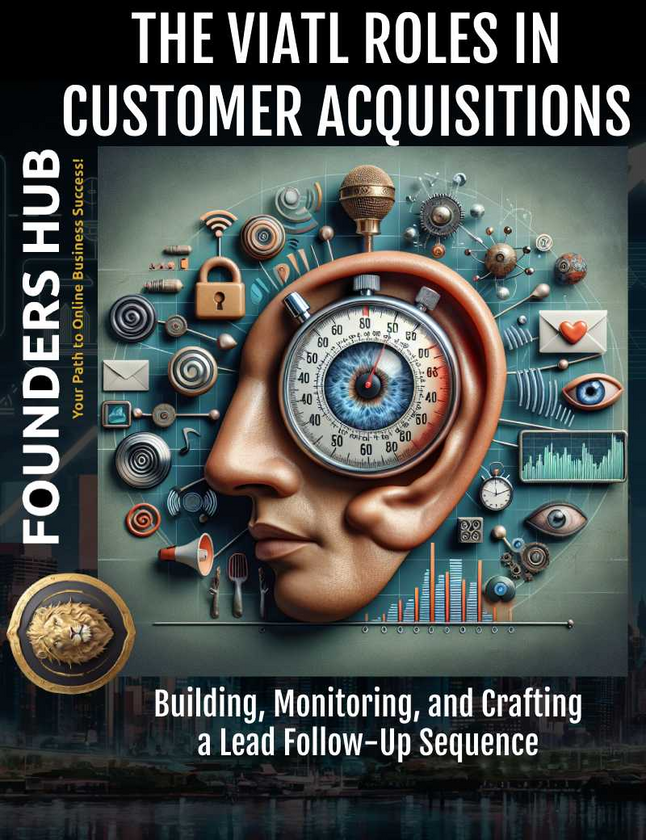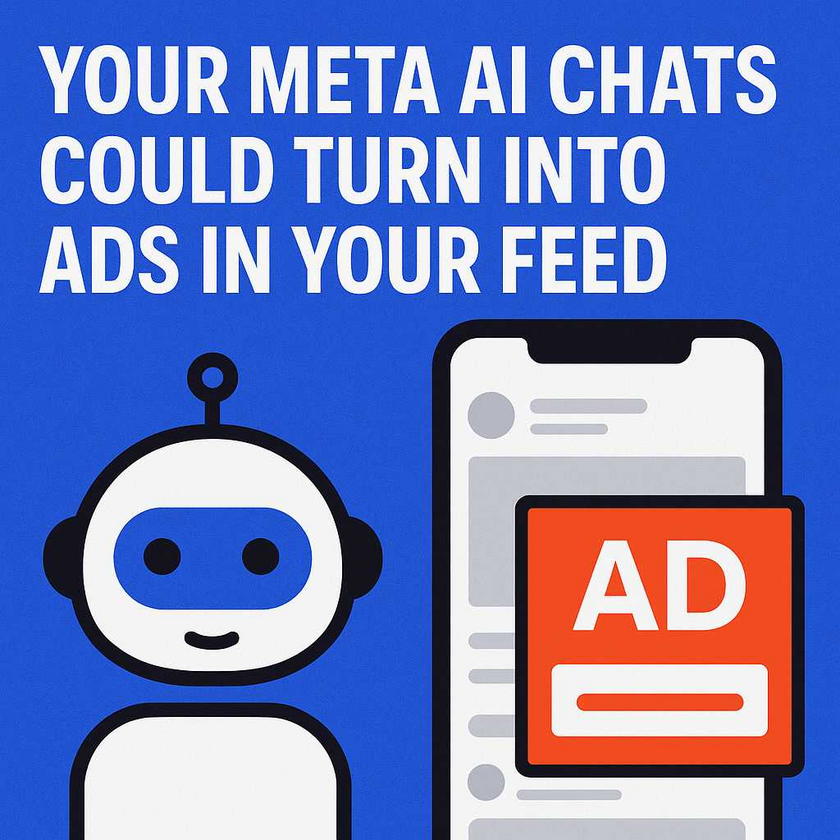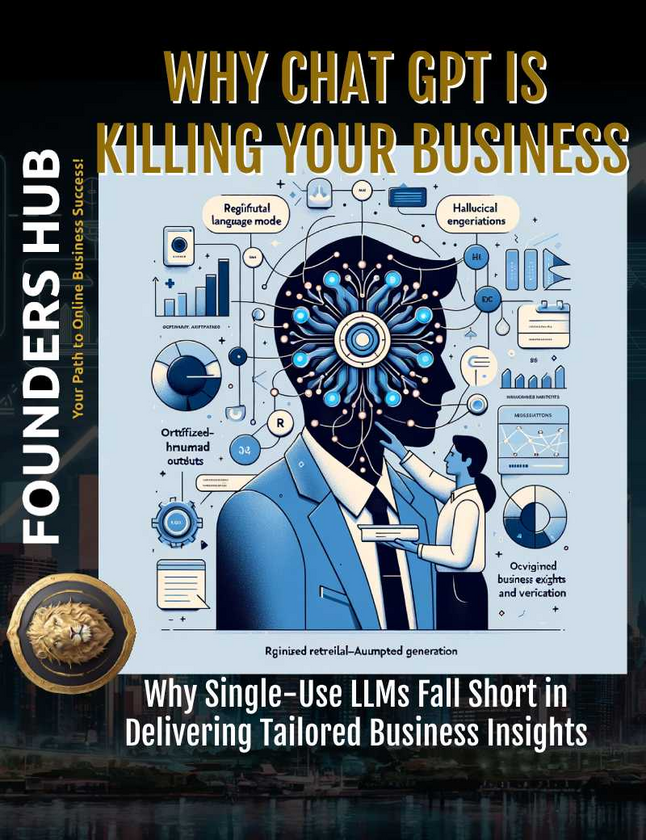In today's competitive business landscape, acquiring new customers is a critical challenge that organizations face. While generating leads is an essential first step, the true test lies in effectively nurturing and converting those leads into loyal customers. This is where the lead follow-up sequence plays a pivotal role. A well-designed follow-up sequence can be the difference between a missed opportunity and a successful customer acquisition.
Key Takeaway: A lead follow-up sequence is a series of strategic interactions designed to guide potential customers through the sales funnel, ultimately converting them into paying customers. By building, monitoring, and continuously refining this sequence, businesses can significantly improve their customer acquisition rates and foster long-lasting relationships.
Become a supporter to access our exclusive members only content
Introduction
The importance of a lead follow-up sequence in customer acquisitions cannot be overstated. According to a study by Forrester Research, companies that excel at lead nurturing generate 50% more sales-ready leads at a 33% lower cost. Furthermore, a report by Marketo found that companies that implement a lead follow-up sequence experience a 20% increase in sales opportunities.
Building a Lead Follow-up Sequence
Crafting an effective lead follow-up sequence requires careful consideration of several key factors, including personalization, timing, and consistency.
Personalization
In today's customer-centric world, personalization is no longer a luxury but a necessity. Customers expect brands to understand their unique needs and preferences, and tailoring interactions accordingly can significantly enhance the customer experience. By leveraging customer data, such as purchase history, browsing behavior, and demographic information, businesses can create highly personalized messages that resonate with their target audience.
For example, addressing customers by their names, referencing past interactions, and offering relevant product recommendations can go a long way in building trust and fostering a sense of connection. This approach aligns with the principles of "Customer Experience Management," which emphasizes the importance of delivering personalized experiences to drive customer satisfaction and loyalty.
Timing
Timing is crucial when it comes to lead follow-up sequences. Responding promptly to inquiries can make a significant difference in maintaining customer interest and engagement. According to a study by Harvard Business Review, companies that respond to leads within an hour are seven times more likely to qualify the lead than those that respond after an hour.
Ideally, businesses should aim to follow up with leads within 24 hours, as this timeframe is often considered the sweet spot for maintaining momentum and maximizing conversion rates. This principle is further reinforced by the concept of "Understanding Customer Experience Throughout the Customer Journey," which highlights the importance of prompt responses in improving customer retention and overall satisfaction.
Consistency
Maintaining a consistent tone and message across all interactions is essential for building trust and reinforcing brand identity. Inconsistencies in messaging can lead to customer confusion and undermine the credibility of the brand. By establishing a unified brand voice and ensuring that all communication channels align with the overarching brand message, businesses can create a seamless and cohesive customer experience.
Consistency not only applies to the content of the messages but also to the frequency and cadence of the follow-up sequence. Establishing a predictable pattern of communication can help manage customer expectations and foster a sense of reliability, ultimately contributing to a positive customer experience.
Monitoring Customer Interactions
While building an effective lead follow-up sequence is crucial, monitoring and adjusting it based on customer feedback and behavior is equally important. This iterative process ensures that the sequence remains relevant and effective over time.
Tracking Customer Feedback
Collecting and acting on customer feedback is essential for identifying areas for improvement and measuring the effectiveness of the follow-up sequence. By leveraging tools such as surveys, feedback forms, and social media monitoring, businesses can gain valuable insights into customer perceptions and experiences.
Responding to feedback in a timely and meaningful manner not only demonstrates that the business values its customers but also provides an opportunity to address any concerns or issues proactively. This approach aligns with the principles of "Driving Customer Equity," which emphasizes the importance of feedback loops in improving service quality and fostering customer loyalty.
Analyzing Customer Behavior
Understanding how customers interact with the brand and navigate the customer journey is crucial for optimizing the lead follow-up sequence. By leveraging analytics tools and techniques, such as heatmaps, click-through rates, and customer journey mapping, businesses can gain valuable insights into customer behavior and identify potential friction points or areas for improvement.
For example, if data reveals that a significant portion of customers drop off at a particular stage of the follow-up sequence, businesses can investigate the underlying causes and make necessary adjustments to improve the customer experience and increase conversion rates.
Crafting the Follow-up Sequence
Once the foundational elements of personalization, timing, and consistency are in place, and customer feedback and behavior have been analyzed, businesses can focus on crafting a comprehensive and effective lead follow-up sequence.
Multi-channel Approach
In today's digital age, customers interact with brands across multiple channels, including email, social media, websites, and mobile applications. To provide a seamless and cohesive experience, businesses must adopt a multi-channel approach to their lead follow-up sequence.
By leveraging various communication channels, businesses can increase their chances of reaching customers through their preferred medium, ensuring that messages are delivered and received effectively. Additionally, a multi-channel approach allows for reinforcement and consistency, as customers can receive complementary messages across different platforms, reinforcing the brand's message and value proposition.
| Channel | Potential Use Cases |
|---|---|
| Nurturing campaigns, personalized offers, educational content | |
| Social Media | Customer engagement, brand awareness, customer service |
| Phone | Personalized outreach, sales conversations, customer support |
| SMS/Push Notifications | Time-sensitive updates, reminders, special offers |
By strategically combining these channels, businesses can create a seamless and integrated customer experience, ultimately increasing the effectiveness of their lead follow-up sequence.
Value-added Content
Throughout the lead follow-up sequence, it is essential to provide customers with relevant and valuable information that addresses their needs and pain points. This approach not only nurtures leads but also positions the business as a trusted authority in the industry.
Value-added content can take various forms, including educational materials, case studies, industry reports, and special offers. By offering content that solves problems, answers questions, or provides actionable insights, businesses can build trust and credibility with their audience, ultimately increasing the likelihood of conversion.
For example, a software company could provide potential customers with whitepapers, webinars, or tutorial videos that showcase the capabilities and benefits of their products. By demonstrating a deep understanding of the customer's challenges and offering practical solutions, the company can establish itself as a valuable resource and increase the chances of converting leads into paying customers.
Conclusion
In the ever-evolving landscape of customer acquisitions, building, monitoring, and crafting an effective lead follow-up sequence is a vital component of success. By embracing personalization, ensuring timely and consistent communication, tracking customer feedback, analyzing customer behavior, leveraging a multi-channel approach, and providing value-added content, businesses can significantly improve their chances of converting leads into loyal customers.
However, it is important to remember that the lead follow-up sequence is not a static entity. It requires continuous refinement and adaptation based on changing customer preferences, market trends, and emerging technologies. By staying agile and embracing a mindset of continuous improvement, businesses can maintain a competitive edge and foster long-lasting customer relationships that drive sustainable growth and success.
Become a supporter to access our exclusive members only content



















